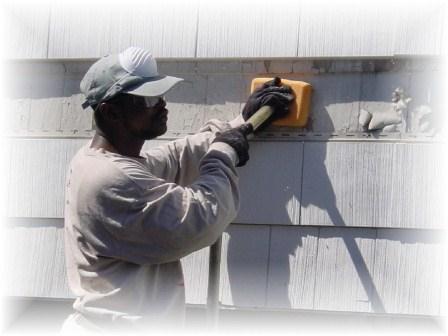What this tool does

This tool will help determine the information you need for installing dense-pack insulation, including the number of bags of insulation and the installed density. A choice of two framing options is given, hidden and exposed, to help you accurately calculate the framing-factor and the fenestration and penetrations.
Calculated values
- Installed density or bag count.
- Cavity area.
- Cavity volume.
Tips
- Clicking the label for any input or result will cause a popup help box to appear. This help box includes the allowed and normal values (for inputs).
- This tool is for dense-packed insulation only.
- Wood framing is assumed, rather than metal framing.
Background
Densely packed cellulose and fiberglass are the favored methods if insulating walls and other closed cavities in existing dwellings. Dense packing is also gaining favor in new construction. Dense-pack methods have the advantages of preventing insulation from settling, completely filling the cavities, consistent insulating values, and the ability to slow airflow.
Cellulose is the favored type of dense-pack insulation used for the DOE-funded low-income weatherization programs. This fire-retardant insulation is made from recycled newspaper and boxes. Advantages include the ability to store small amounts of water and, because it is usually manufactured locally, it is not shipped long distances. Cellulose has the disadvantages of breaking down when it gets saturated with water. Its R-value per inch is from 3.2 to 3.5 (0.222 to 0.2428 RSI per cm).
Fiberglass is lighter than cellulose and will not be permanently damaged if it is saturated with water. Currently, about 20 to 40 percent of the fiberglass sold as insulation is recycled. This is a significantly lower percentage than cellulose, but the fiberglass industry continues to make gains. Its R-value per inch is 4.2 (0.29 RSI per cm).
Best Practices
Dense-pack insulations should always be installed at the manufacturer’s recommended densities. In the Dense-Pack Insulation tool, include this density as the “Installed density” when solving for “Bag count”. The recommended dense-packed density for cellulose is 3.5 to 4.5 lb/ft3 (56 to 72 kg/m3) and for fiberglass 1.8 to 2.6 lb/ft3 (29 to 42 kg/m3).
Installing dense-pack insulation properly requires the proper knowledge and “feel”, this only comes from experience. In addition to the skill of the installer, the insulation blowing machine must have the proper capacity to install the insulation productively. The static pressure at the takeoff of the blowing machine should be at least 2.9 pounds per inch2 or 80 inches of water column (722 pascals). Blowing machines should be kept in good working order. Periodically the installed density should be verified. There are a number of ways to do this, including core sampling or the use of this tool to calculate the overall insulation density of fiberglass or cellulose.